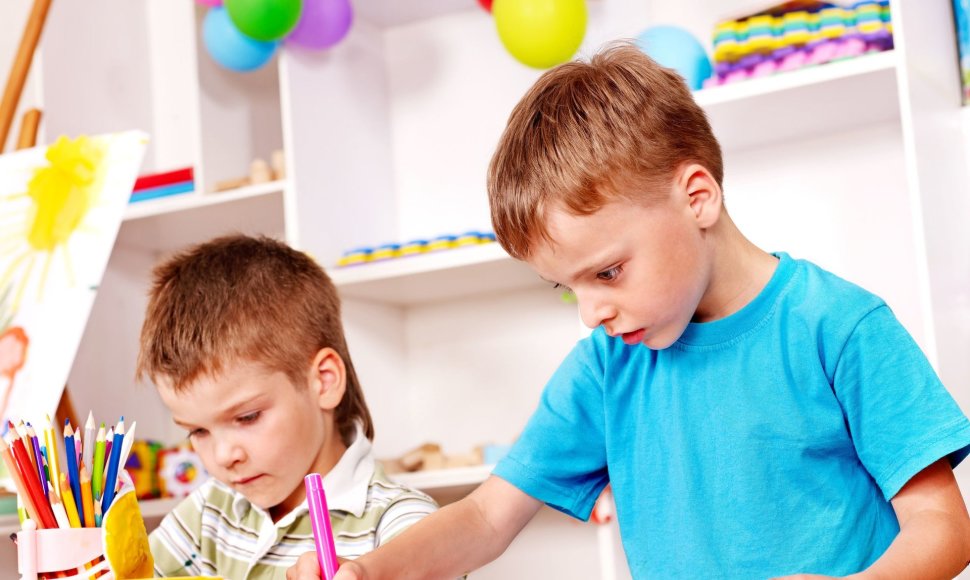According to the School Counsellor, the holidays are an excellent opportunity to take up creative, fun and inspiring things for children. If they can play with their parents or other children, they learn to understand themselves and others better. “During the holidays children learn to understand, to name and manage their feelings and emotions, as well as to care for others' feelings. All of these are components of the so-called emotional intelligence,” Ms. Sirtautaitė says.
According to her, the better children can understand themselves and those around them, the safer they feel and are less uncomfortable while interacting with others. “The children then become free, are not afraid to show themselves, do not feel the need to hide anything. This also contributes to creativity – the children find it easier to look at situations creatively, they are not afraid to make mistakes or be treated negatively,” the specialist says.
She also emphasizes the importance of creativity for children: “Those who grow up under difficult physical and emotional conditions, particularly if we look from an evolutionary, historical perspective at communities, which still live as hunter-gatherers, their main goal is to survive. The children who grow up in such communities fear to create, discover new things, or explore the world. While the children who are loved and grow up in a safe environment want to create and are eager to discover new things. Such people grow up to lead their communities and all of the society forward,” Ms. Sirtautaitė says.
Sense of humour displays emotional intellect
Another trait that reflects emotional intelligence is a sense of humour. “It shows that the child understands how other people think and knows what to say to amuse others. This is called the ability to mentalize. The higher this ability, the clearer the child is able to understand other people’s desires, emotions and motives and the easier it is for them to communicate with others,” the specialist explains.
An individual with a sense of humour knows how to creatively resolve social situations – make a joke when someone is angry and thus reduce tensions in the situation. “For example, upon being reprimanded for failing to wash the dishes, they might comment that the dishes weren’t washed solely because they wanted to show what a large tower of unwashed dishes could be built – isn’t it impressive? A sense of humour nurtures creativity because it encourages to seek links between unrelated things. Often, funny jokes end unexpectedly or unpredictably, which makes them funny,” states the Counsellor of the American International School of Vilnius.
Colouring in isn’t creative
AISV Art teacher Ms. A. Platonova proposes to involve children during the summer holidays in a project, which encourages their creativity: “The authors of this idea, the Los Angeles Museum of Arts, invited people to select a piece of art and recreate it with items they have in their household. Various techniques can be used: drawing, graphical design or even similar items – what is important is that colours, forms and content would match,” the art teacher explains.
According to her, children should select a piece of art they like themselves. “At school, we seek to offer children the freedom to choose, thus encouraging them to find their own interest to complete the task. Thus, I would invite children to cooperate with their friends or family. They can spend time together outdoors, and children get very absorbed in such tasks. During the lockdown, we tried the task at school, and some children submitted even about ten recreations of pieces of art. Others discovered interesting authors and began to study their stories,” Ms. Platonova explains.
The experienced art teacher says that most important is to offer opportunities for children to open up. “I do not recommend that parents give their children pictures to colour in because limits and rules restrain creativity. For a small child, drawing three lines might be a horse, in 4-5th grade children want to learn to draw more precisely, while in 9-10th grade a feeling of shame emerges if they can’t draw precisely,” the teacher explains.
According to Ms. Platonova, it is necessary to allow children to contribute. “For example, you can ask them to decorate a cake. First, show a few examples of how it can be done and then let them improvise. Perhaps they will use the example, perhaps they will merge several methods, or perhaps they will come up with their own, and it will make them happy,” the educator shares her advice on nurturing creativity.












